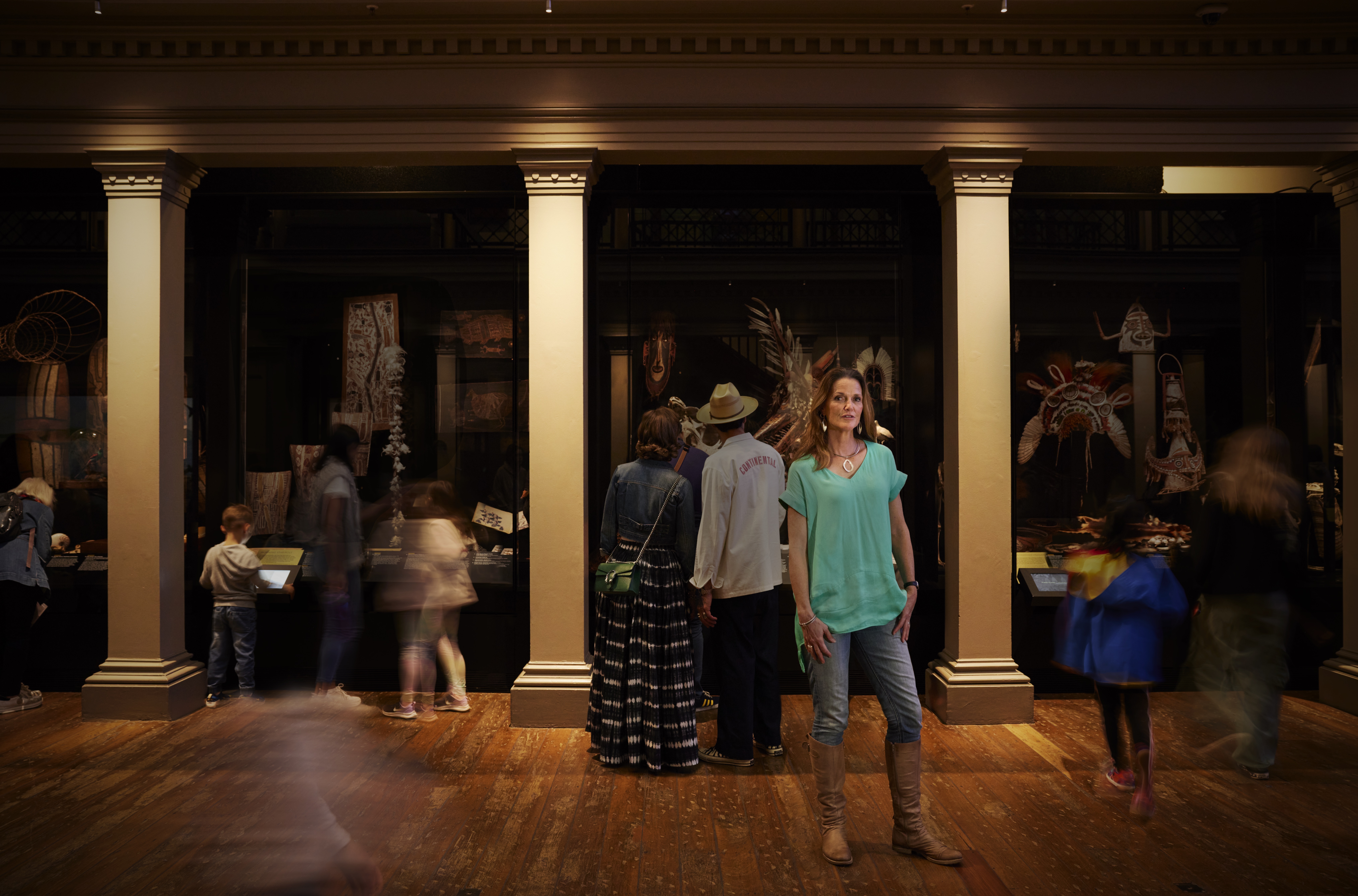Just as Australia declares war on cats, with the release of the federal government’s draft feral-cat management program, a blockbuster exhibition venerating these mammals arrives in New South Wales. The much-anticipated Ramses & the Gold of the Pharaohs opens at the Australian Museum (AM) in Sydney on 18 November, representing the largest cultural exhibition Australia has received in more than a decade. Among the 4500- to 2000-year-old ancient Egyptian artefacts are funerary masks and sacred amulets, a menagerie of mummified animals, collars and bracelets festooned with semiprecious gemstones, painted limestone reliefs and faience tiles, diadems, and a gold uraeus – the rearing cobra on a pharaoh’s headdress – inlaid with lapis lazuli and amazonite. The objects range from the Old Kingdom (2686BCE–2181BCE) through to Roman times, with a strong focus on Egypt’s New Kingdom period (roughly 1550BCE–1069BCE).
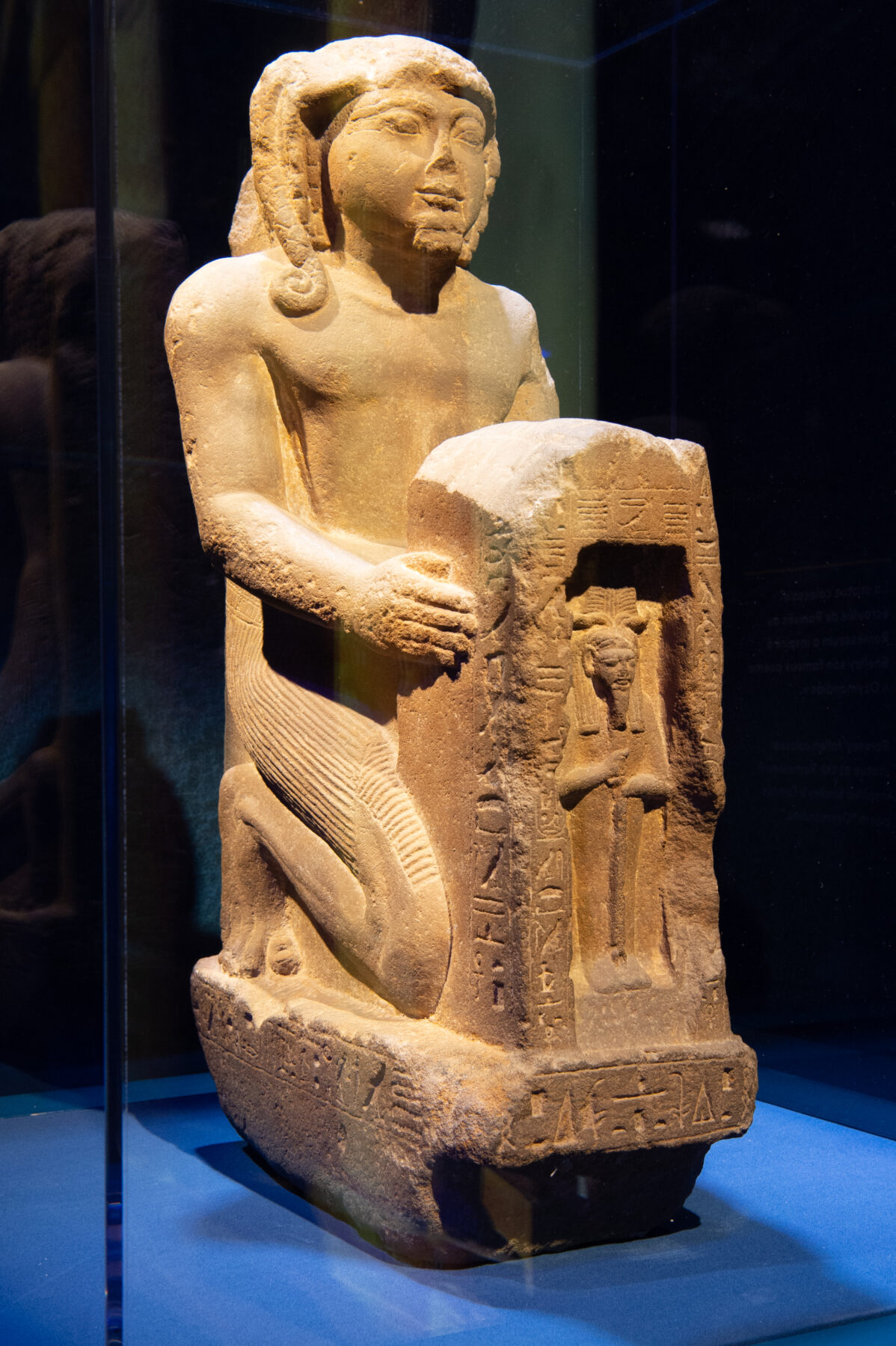
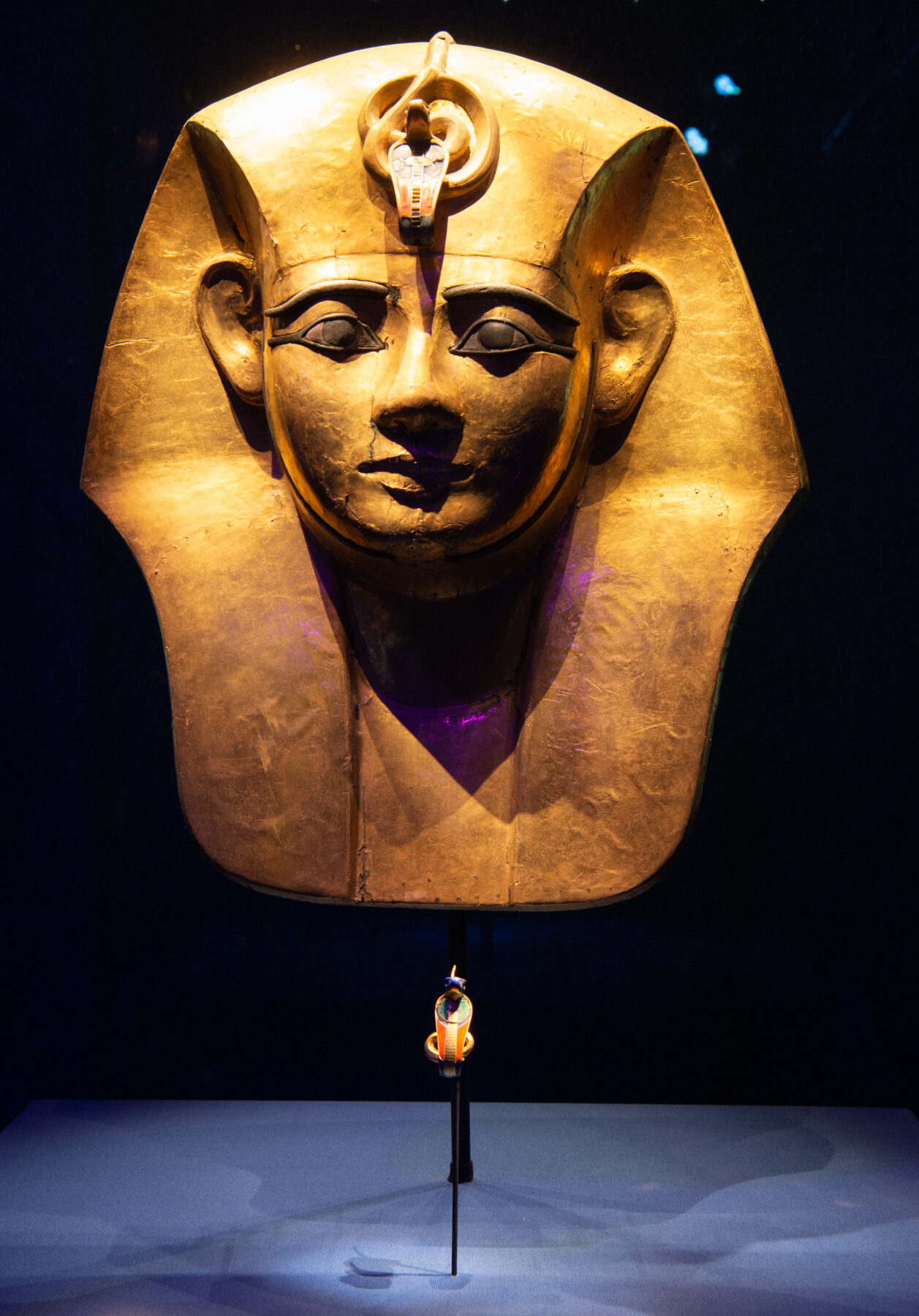
The exhibition’s namesake, Ramses II, was a pharaoh typical of the New Kingdom, a golden age characterised by military expansion, lucrative trade and spectacular art and architecture. Ramses ascended the throne in 1279BCE, when he was about 25, and quickly proved his ability as a ruler and warrior. A few years later, his victory against the Hittites at the Battle of Kadesh resulted in the world’s first peace treaty. Egypt prospered during his nearly 67-year reign – the second longest in Egyptian history – owing to his aptitude for law-making, diplomacy and military strategy. Ramses II was also a shrewd propagandist, constructing large monuments and public buildings that reinforced his divine status and power over his subjects. He lived to a ripe age, about 91, and fathered more than 100 children along the way.
But the 181 artefacts displayed at Ramses & the Gold of the Pharaohs were not taken from his tomb, which was robbed in ancient times. The exhibition brings together archaeological artefacts from the Ramses II era, supplemented with treasures from other royal tombs and objects from other periods.
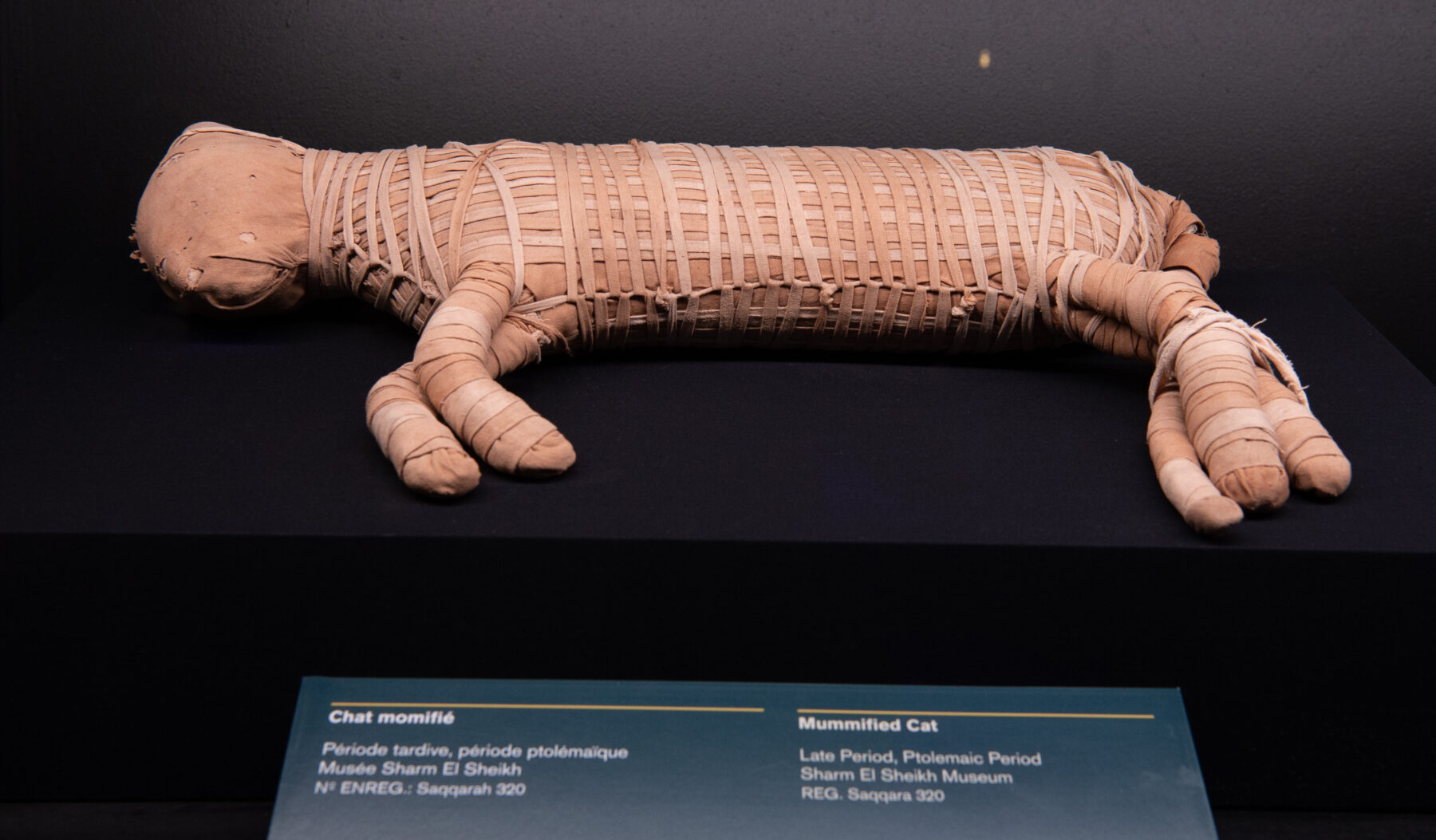
Fran Dorey, AM’s Head of Exhibitions, has spent her career handling priceless artefacts. In the Ramses II exhibition, it’s the ‘commonplace’ items associated with the Egyptian laity that most excite her. “There’s some really nice everyday items there, cool stuff that doesn’t typically get mentioned because it’s small or it’s mundane, [such as] sketches from the workers in the Valley of the Kings,” she says. “I connect more with that.”
Many species of animal feature prominently in Egypt’s archaeological record and offer insight into the complex religious beliefs of the ancients. A number of deities in the Egyptian pantheon are portrayed in human-animal form. Among the most recognisable are Horus, Anubis and Thoth, who are all depicted with a man’s body and, respectively, the head of a falcon, jackal and ibis (or baboon). “[There’s] the occasional god with a human face, but most are represented in animal form,” says Fran. On display at the Ramses II exhibition are three gold amulets of Bastet, a cat-headed goddess associated with domesticity, fertility and childbirth. There are also two wooden statues of a cobra-headed goddess, thought to be Renenutet, a deity associated with the harvest, and the protection of newborns.
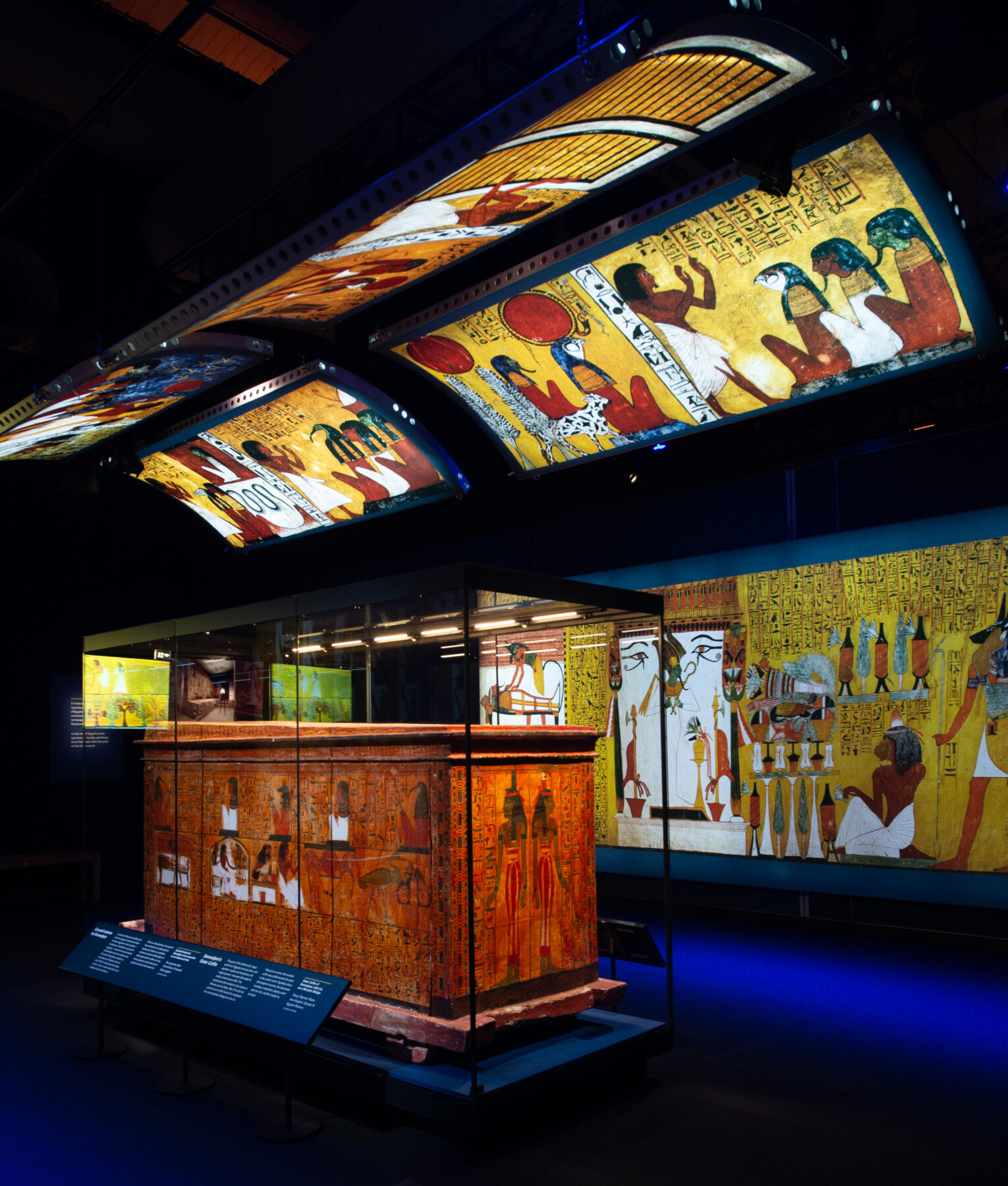
The ancient Egyptians certainly venerated animals – but it’s misleading to say they worshipped them. Animals were sacred because they were associated with a particular deity. “Basically, there’s the belief that the gods would manifest themselves in animal forms,” says Fran. “So you respected these animals, because you didn’t know if it was the god in animal form.”
Many animals shared traits with their associated deity, such as Sekhmet, the woman-lioness goddess of war and healing. There’s also Khepri, the god of the rising sun, who, in one of his many forms, is depicted as a scarab beetle with a man’s body. “Dung beetles (a type of scarab) rolling dung were seen as being similar to the sun rolling across the sky. From the dung ball would hatch thousands of baby scarabs,” says Fran. “So scarabs were very important to the concept of resurrection and regeneration, and were associated with the sun god.” Two unusual artefacts in the Ramses II exhibition are the limestone sarcophagi for scarab beetles, which were discovered inside a Ptolemaic-period tomb in 2018. One sarcophagus holds two large, mummified scarabs individually wrapped in linen. The other contains hundreds of tiny mummified scarabs.
The ancient Egyptians mummified nearly every type of animal, but scarabs are certainly outliers. Cats are one of the most common animal mummies in the archaeological record – so common, in fact, that they were ground up and sold as fertiliser in London in the 19th century. The Ramses II exhibition includes two mummified cats that were sewn into linen shrouds and wrapped, both vertically and horizontally, in bandages. Stitching indicates their facial features. These mummies were discovered at the Bubasteion temple in Saqqara – the sprawling necropolis of ancient Memphis – stashed in tombs hewn from rock. The tombs were originally intended for humans. X-rays show one cat died from a crushed skull, indicating it was a votive offering for the goddess Bastet.
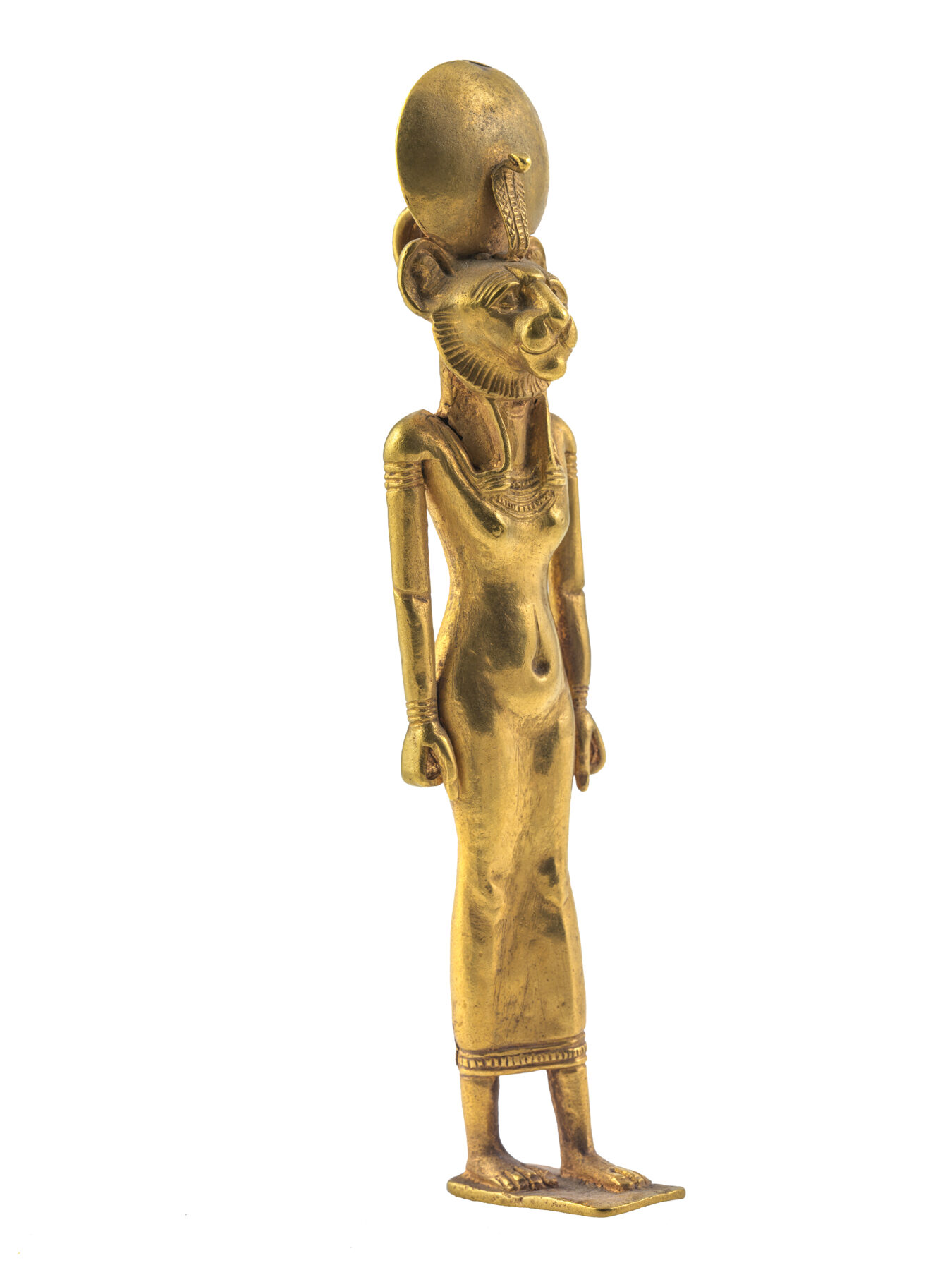
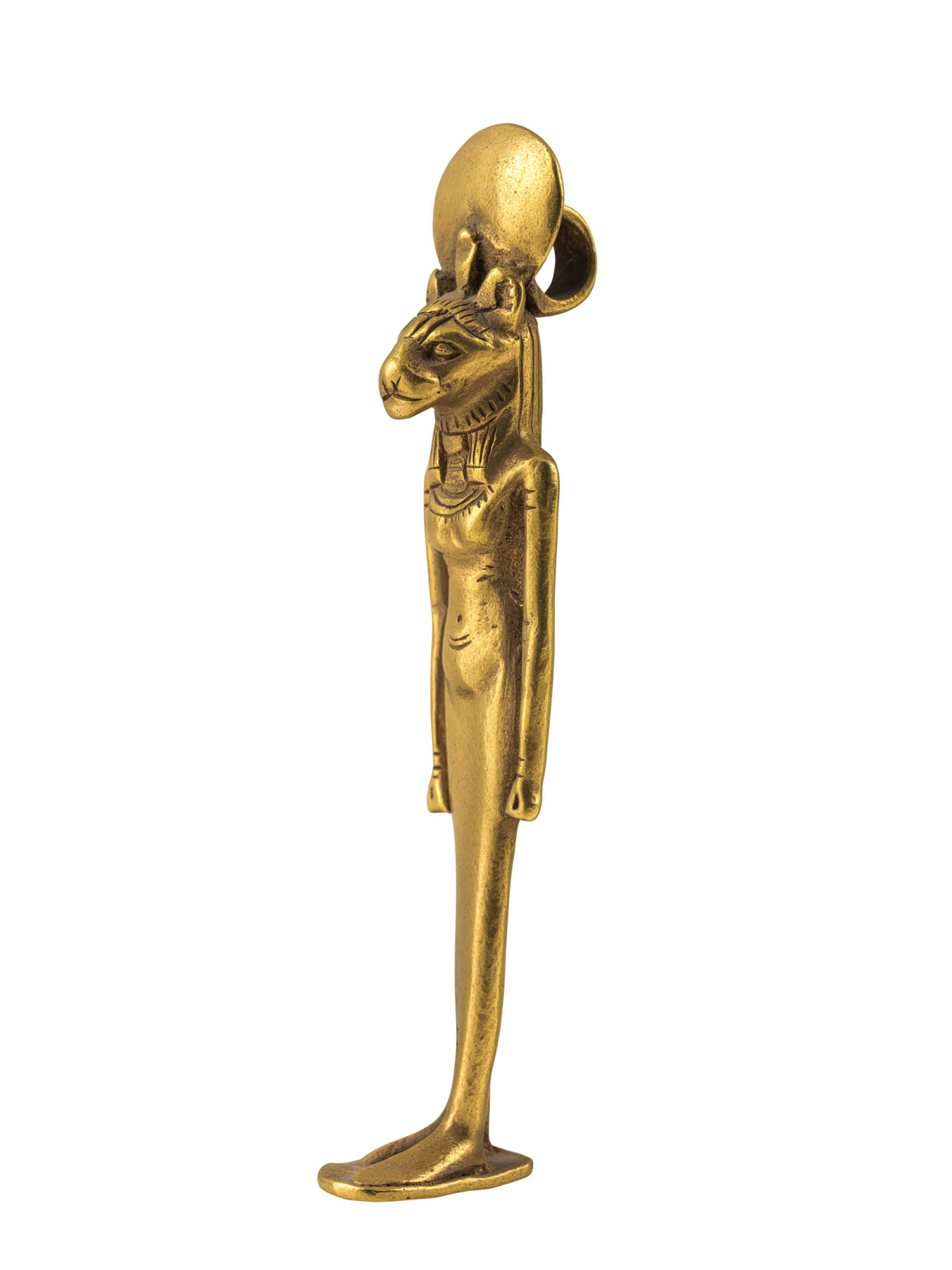
Archaeologists categorise animal mummies into four groups, the largest of which are votive offerings. Votive offerings were a physical form of prayer, as ancient Egyptians likely believed that animals were messengers between humans and the gods. These animals were specifically bred to be sacrificed to their associated deity (such as crocodiles for Sobek, or ibis for Thoth), killed by priests, mummified and then sold to pilgrims visiting the temple. The votive offerings were then buried in catacombs or underground galleries. Archaeologists continue to discover these ‘pet cemeteries’ across Egypt. One site discovered in 2015 in Saqqara holds an estimated eight million mummified puppies dedicated to the jackal-headed god Anubis.
By the New Kingdom period, votive offerings developed into a profitable industry, and animals were reared in their millions. Mass production made votive offerings more affordable – but also of varying quality. Archaeologists use X-rays and CT scans to peek inside wrappings and often discover a single bone in place of the skeleton. Some votive offerings are mud, shaped to look like an animal.
“[It’s unknown] whether people were fraudulent, selling rubbish, or if it didn’t matter what was inside…if it was the shape or the gesture of making an offering that was more important,” Fran says.
But according to Fran, the mummified votive offerings in this exhibition represent the ‘higher end’ of the spectrum. The two mummified crocodiles – offerings to the god Sobek – are even contained in their own bespoke coffins. At just 48cm and 92cm long, their size suggests the crocodiles were specifically farmed to become votive offerings. Fran says adult crocodile mummies are common in the earlier periods, but as mass production geared up, it became more practical to harvest juveniles.
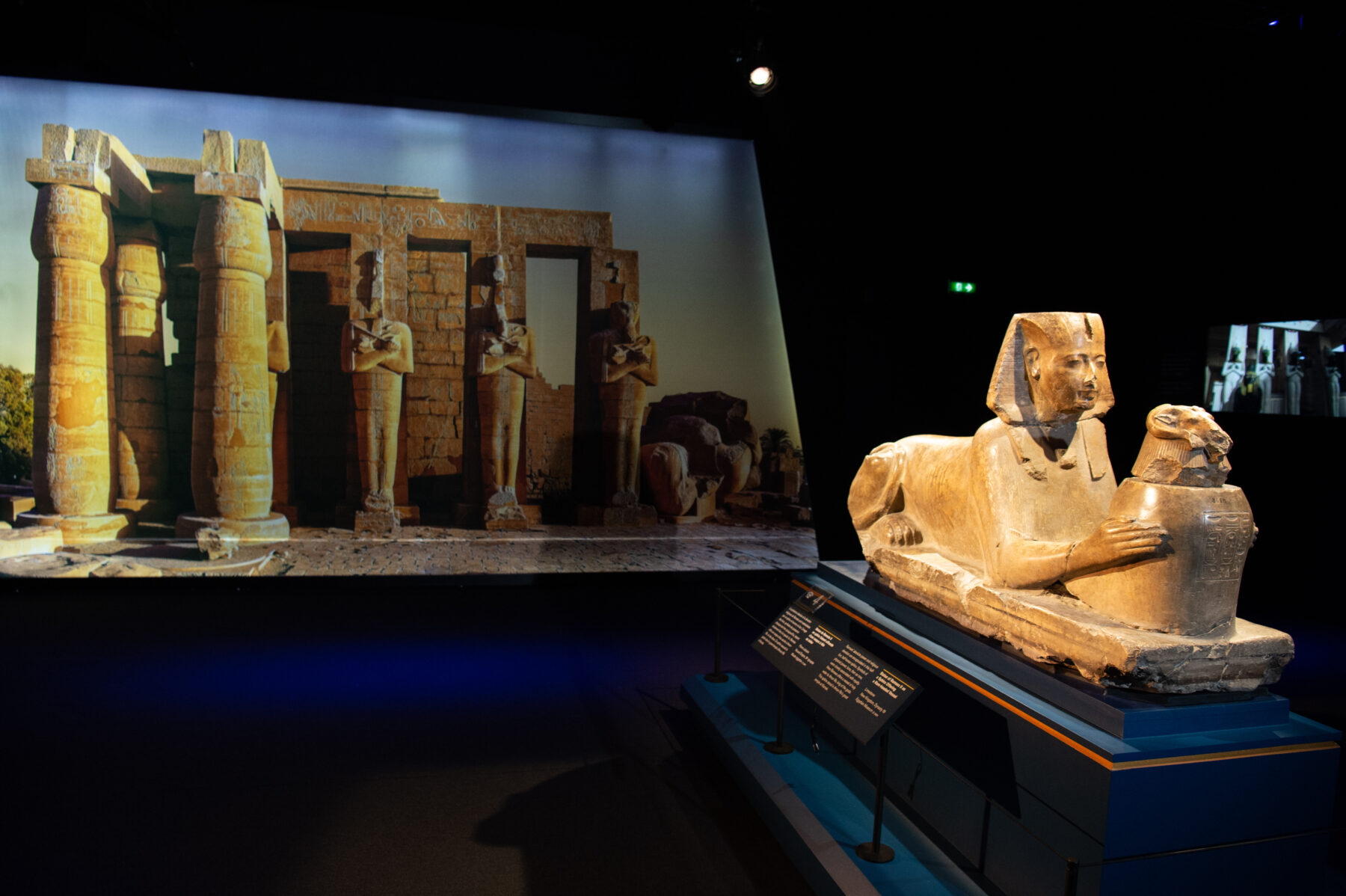
Cult animals represent the second category of mummified animals. These were the species resident at temples, such as the Khnum ram of Elephantine and the Mnevis bull at Heliopolis. They were believed to be the physical manifestation of a god because they had specific markings.
Only one temple animal was alive at a time, and its death prompted a period of mourning. Arguably the most revered temple animal was the Apis bull in Memphis, which was associated with the creator god Ptah. “Apis bulls were a representation of a god on earth,” says Fran. “The Apis bull was treated as a god, lived as a god and was preserved and buried as a god.”
The Apis bull was found during a nationwide search. According to the Roman author Aelian, the divine bull needed to match a list of 29 attributes, reflecting the 29 days of the lunar cycle. Herodotus provides more detail: the candidate had to have a white diamond on its forehead, the likeness of eagle wings on its back, and the sign of the scarab under its tongue. It also had to be the fruit of miraculous conception, the mother impregnated by a flash of light from heaven.
Once found, the Apis bull was taken to Memphis and treated to a life of luxury; it was perfumed, received hot baths and massages from attendants, and even had exclusive access to a ‘harem’ of hand-picked cows. Priests and pilgrims consulted the divine bull as an oracle, asking it questions and interpreting its steps and movements as signs from the gods. Its birthday was celebrated during the seven-day Apis Festival, where the divine bull was adorned in jewellery and paraded through the streets.
When it died, the Apis bull was elaborately mummified in a process befitting its divine status. Priests removed its organs and stored them in canopic jars, before covering the body with natron salt to mummify it. Roughly 70 days later, priests wrapped the dried remains in bandages and interred the beast in a granite sarcophagus. From the New Kingdom period, Apis bulls were buried in an underground burial chamber called the Serapeum. Some were laid to rest with shawabtis, figurines of servants that would serve them in the afterlife.
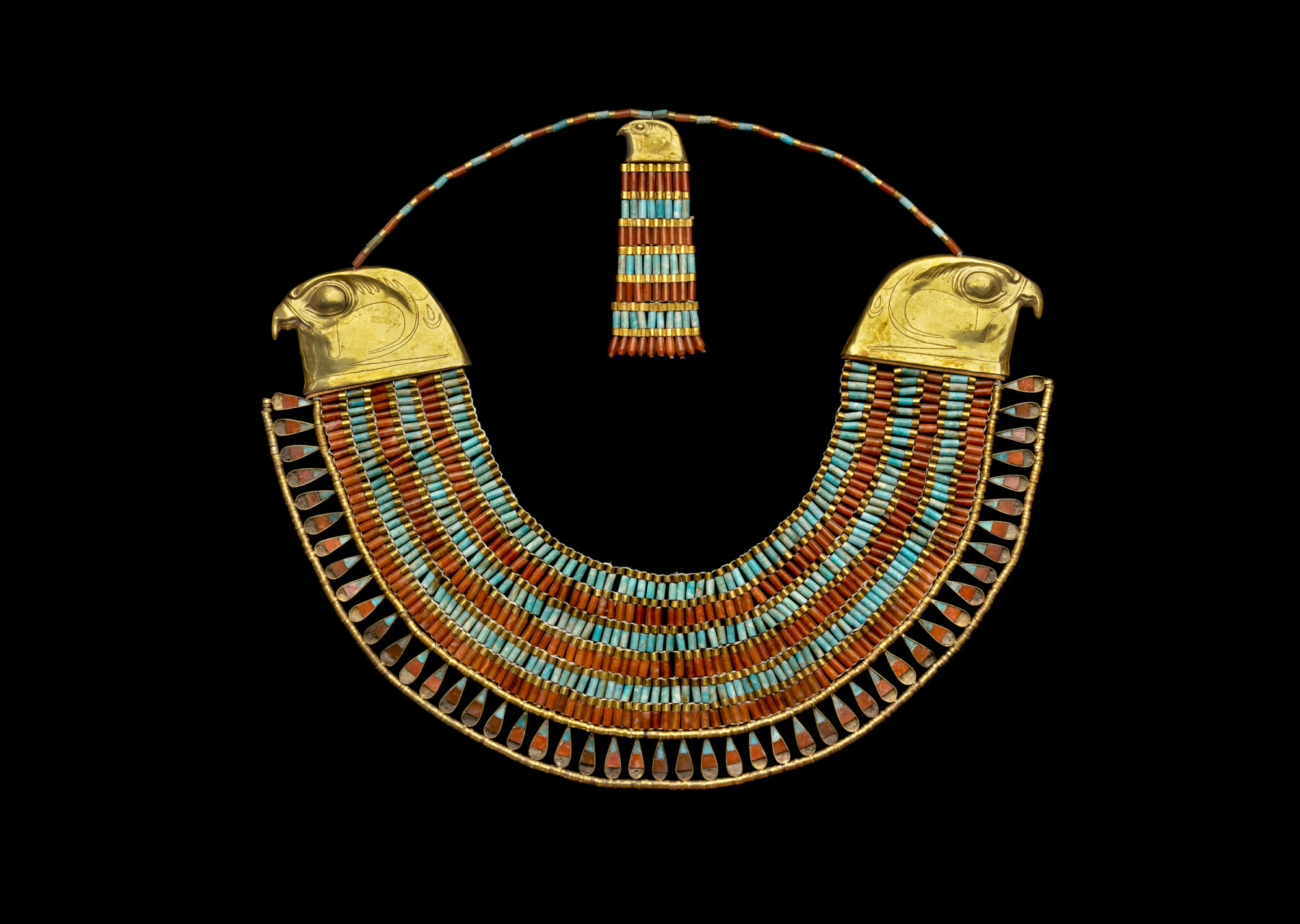
Cult animals such as the Apis bulls represent the extreme end of the spectrum of animal mummification. At the opposite end are victual mummies, which represent the third category of mummified animal. These were food items – typically fowl or fish – stored in tombs to provide nourishment for the deceased in the afterlife. These animals (or cuts of meat) were preserved and stored in boxes made from the wood of sycamore trees, or in reed baskets. Among the more than 5000 items stashed inside Tutankhamun’s tomb – one of the most intact pharaoh tombs as yet discovered – were 48 wooden cases of beef and poultry cuts. The teenage pharaoh also ruled during the New Kingdom period, dying about 50 years before Ramses II ascended the throne.
Pets, the fourth type of animal mummies, were also found inside tombs. These beloved animals of the Egyptian elite – cats, dogs, falcons, monkeys, gazelles, baboons, mongooses or more – did not receive the same pomp and ceremony as sacred animals, but were mummified with great care, often receiving burial rites so they could reunite with their owners in the afterlife. Many were elaborately decorated with painted wrappings and interred in their own sarcophagus. One of the best-known examples is the KV50 tomb of mummified domestic animals, believed to have once belonged to Amenhotep II.
Ramses II’s tomb was looted in antiquity, so we don’t know if he mummified his pets – or even kept animals in his royal residences. However, a mural at Abu Simbel depicts Ramses riding his chariot into battle with a lion running at his side. This tamed lion might have been an exotic pet – or just propaganda reinforcing his reputation as a strong and fearsome warrior. The scene depicts Ramses’s victory against the Hittites at the Battle of Kadesh (c.1274BCE), which was fought on the Orontes River in modern-day Syria. It was probably the biggest chariot battle in history, and the two horses that drew Ramses’s chariot (Victory-in-Thebes and Mut-is-satisfied) are mentioned by name in the battle narrative.
